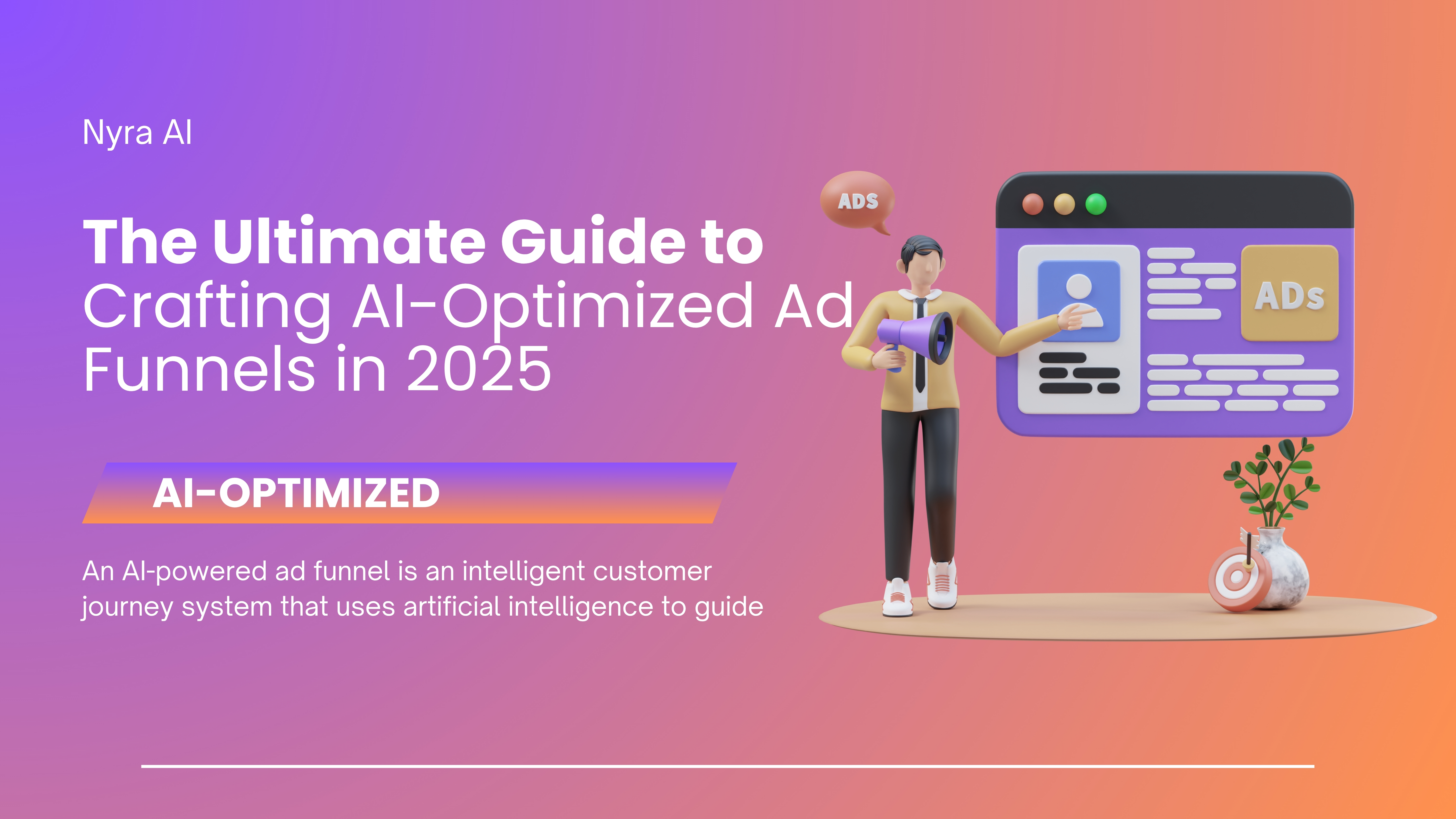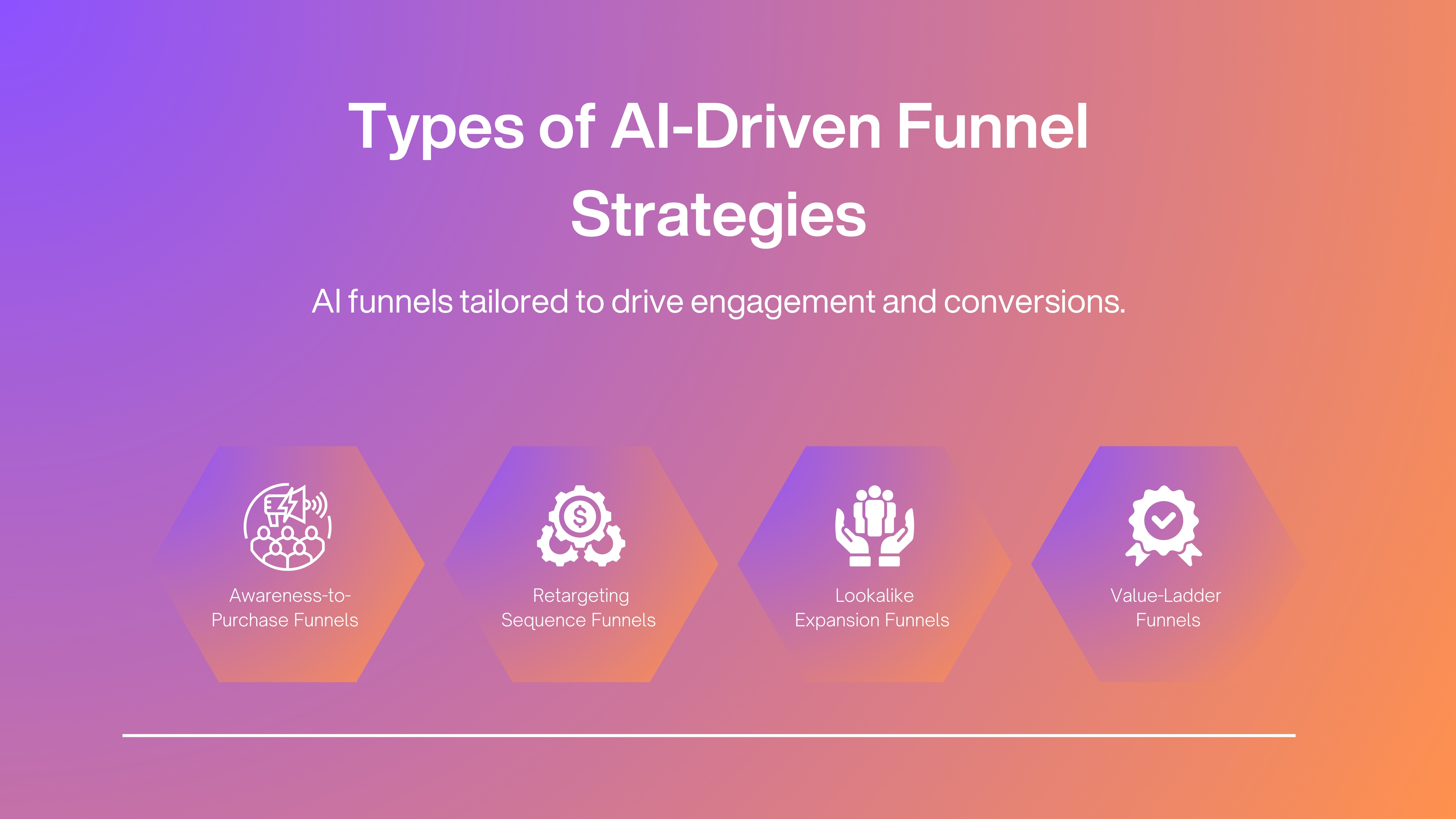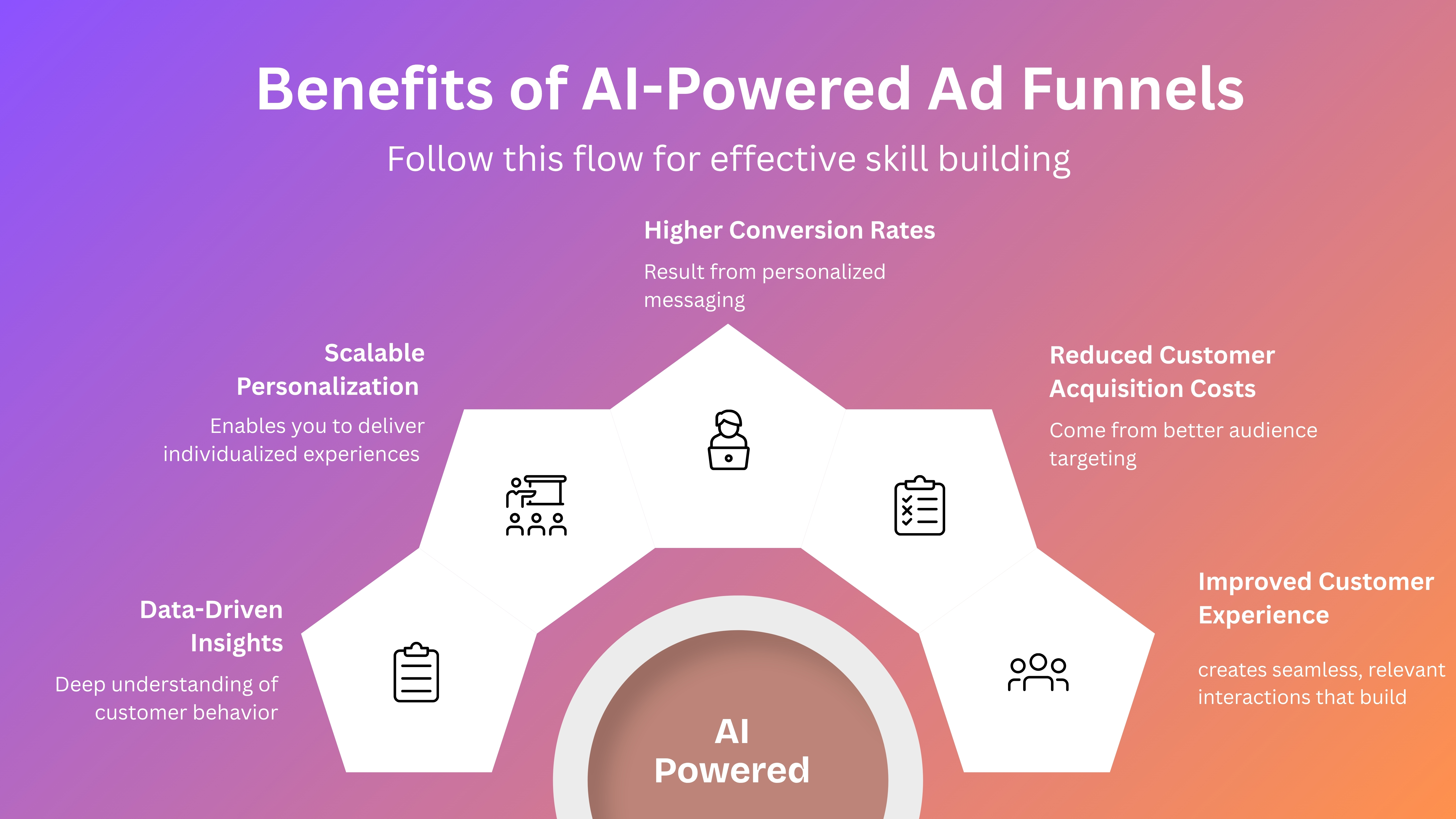The Ultimate Guide to Crafting AI-Optimized Ad Funnels in 2025

The Ultimate Guide to Crafting AI-Optimized Ad Funnels in 2025
What is an AI-Powered Ad Funnel?
An AI-powered ad funnel is an intelligent customer journey system that uses artificial intelligence to guide prospects from first awareness to final purchase through precisely timed, personalized advertising touchpoints. Unlike traditional funnels that rely on broad assumptions about customer behavior, AI funnels adapt to individual user actions and optimize each stage for maximum conversion.
AI-Powered Ad Funnels vs. Traditional Marketing Funnels
Traditional marketing funnels use static, one-size-fits-all approaches with predetermined messaging sequences. They rely on manual audience segmentation, generic content for each funnel stage, and fixed timing intervals that don't account for individual customer preferences or behaviors.
AI-powered ad funnels create dynamic, personalized experiences for each prospect. They automatically adjust messaging based on engagement patterns, optimize timing for individual users, and shift budget allocation between funnel stages based on real-time performance data. This personalization dramatically improves conversion rates while reducing customer acquisition costs.
How AI Tackles Ad Funnel Challenges
- Dynamic Personalization
- Behavioral Prediction
- Automated Optimization
- Real-Time Segmentation
- Cross-Platform Coordination
- Performance Intelligence
Dynamic Personalization creates unique experiences for each prospect based on their behavior, interests, and engagement patterns. AI analyzes user data to deliver the most relevant message at the optimal moment in their buying journey.
Behavioral Prediction uses machine learning to anticipate customer actions and identify the highest-probability next steps. AI predicts which prospects are most likely to convert and allocates resources accordingly.
Automated Optimization continuously adjusts funnel elements including ad creative, targeting parameters, and budget distribution. AI identifies underperforming stages and reallocates resources to maximize overall funnel efficiency.
Real-Time Segmentation automatically groups prospects based on engagement patterns, demographic data, and purchase likelihood. AI creates micro-segments that enable hyper-targeted messaging throughout the funnel.
Cross-Platform Coordination ensures consistent, complementary messaging across Google, Meta, TikTok, and other channels. AI synchronizes campaigns to create seamless customer experiences regardless of platform.
Performance Intelligence provides deep insights into funnel effectiveness, identifying bottlenecks and optimization opportunities that would be impossible to detect manually.
Types of AI-Driven Funnel Strategies
 These AI-powered funnel types are designed to match intent, maximize engagement, and boost conversions at every stage.
These AI-powered funnel types are designed to match intent, maximize engagement, and boost conversions at every stage.
- Awareness-to-Purchase Funnels
- Retargeting Sequence Funnels
- Lookalike Expansion Funnels
- Value-Ladder Funnels
- Seasonal Campaign Funnels
Awareness-to-Purchase Funnels guide cold prospects through the complete buying journey using AI-optimized touchpoints. They start with broad awareness campaigns and progressively narrow focus to high-intent audiences ready to purchase.
Retargeting Sequence Funnels re-engage website visitors who didn't convert initially. AI determines optimal timing, messaging, and incentives based on specific user behaviors and engagement patterns.
Lookalike Expansion Funnels use AI to identify and target audiences similar to existing customers. They automatically create custom audiences and develop messaging that resonates with these high-probability prospects.
Value-Ladder Funnels introduce prospects to increasingly valuable offers, building trust and commitment over time. AI optimizes the sequence and timing of value-based touchpoints.
How AI Ad Funnels Work in Practice
- Audience Intelligence and Segmentation
- Creative Optimization Across Stages
- Automated Budget Allocation
- Performance Analysis and Adjustment
Audience Intelligence and Segmentation begins with AI analyzing your existing customer data to identify behavioral patterns and characteristics. The system creates detailed prospect profiles and automatically segments audiences based on purchase likelihood, engagement level, and demographic factors.
Creative Optimization Across Stages involves AI generating and testing multiple ad variations for each funnel stage. The system creates awareness-focused content for top-of-funnel prospects, consideration-driving materials for middle-funnel audiences, and conversion-optimized ads for bottom-funnel users.
Automated Budget Allocation uses AI to distribute spending across funnel stages based on performance and opportunity. The system identifies which stages generate the highest ROI and automatically shifts budget to maximize overall funnel effectiveness.
Performance Analysis and Adjustment continuously monitors funnel metrics and implements optimizations. AI identifies bottlenecks, tests solutions, and makes data-driven adjustments to improve conversion rates throughout the customer journey.
Benefits of AI-Powered Ad Funnels
 Smart funnels that adapt to user intent and accelerate conversions.
Smart funnels that adapt to user intent and accelerate conversions.
- Higher Conversion Rates
- Reduced Customer Acquisition Costs
- Improved Customer Experience
- Scalable Personalization
- Data-Driven Insights
Higher Conversion Rates result from personalized messaging and optimal timing throughout the customer journey. AI-powered funnels typically show 150-300% improvement in conversion rates compared to static funnel approaches.
Reduced Customer Acquisition Costs come from better audience targeting and budget optimization. AI eliminates waste by focusing resources on high-probability prospects and high-performing funnel stages.
Improved Customer Experience creates seamless, relevant interactions that build trust and engagement. Prospects receive the right message at the right time, making their buying journey feel natural and helpful.
Scalable Personalization enables you to deliver individualized experiences to thousands of prospects simultaneously. AI handles the complexity of personal touchpoints without requiring manual intervention.
Data-Driven Insights provide deep understanding of customer behavior patterns and funnel performance. AI identifies optimization opportunities and strategic improvements that drive long-term growth.
AI Ad Funnel FAQ
How long does it take to see results from AI funnels?
Initial results appear within 7-14 days as AI gathers data, with full optimization typically achieved within 30-60 days. The system continuously improves performance over time.
What's the minimum budget needed for AI funnels?
Start with a $1,000-2,000 monthly budget to provide sufficient data for AI optimization. Smaller budgets limit AI's ability to test and optimize effectively across funnel stages.
Can AI funnels work for B2B businesses?
Yes, AI funnels excel at B2B applications by nurturing longer sales cycles and personalizing content for different decision-makers within target organizations.
How does AI handle seasonal changes?
AI automatically adjusts funnel messaging, timing, and budget allocation based on seasonal patterns, market trends, and historical performance data from previous periods.
What if my industry has long sales cycles?
AI funnels are particularly effective for long sales cycles because they maintain engagement over extended periods and identify optimal timing for advancement through funnel stages.